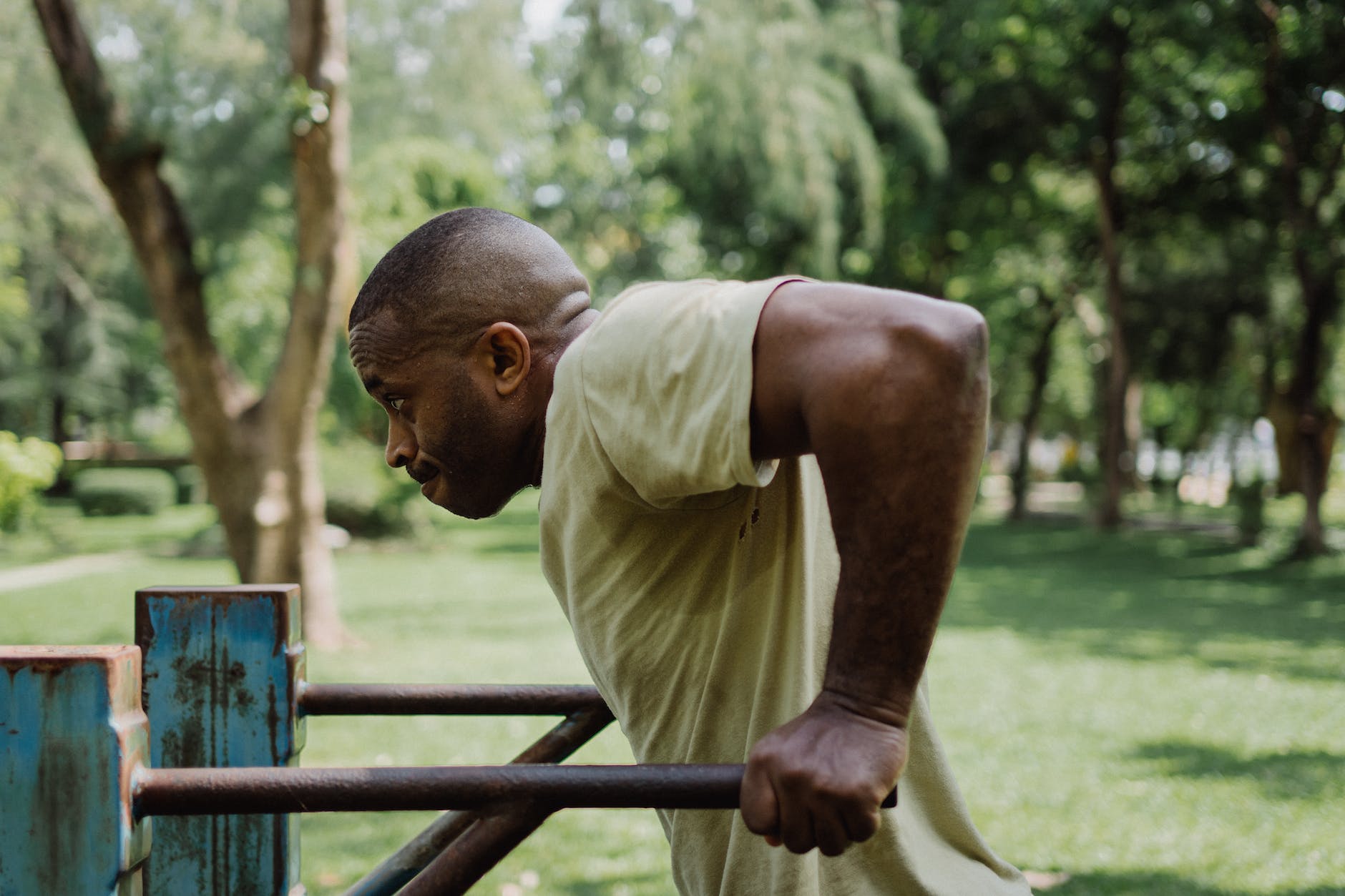
Plyometric Dips
Plyometric dips are a dynamic variation of the traditional dip exercise that combines strength training with explosive movements. By incorporating plyometrics into your dip routine, you can enhance muscle power, increase upper body strength, and improve overall athletic performance. In this section, we will guide you through the proper technique and key considerations to effectively perform this exercise.
How to do Plyometric Dips
- Starting Position: Begin by gripping the parallel bars or dip bars with your arms fully extended and locked out. Maintain a slightly forward-leaning position to engage the chest and triceps.
- Eccentric Dip: Lower your body by bending your elbows until your upper arms are parallel to the ground. Control the descent to activate the target muscles.
- Explosive Push: From the bottom position, swiftly push yourself up with maximal force. As your arms extend, explode off the bars, aiming to achieve maximum height.
- Landing: Land softly with slightly bent elbows, absorbing the impact with your muscles rather than your joints.
Important Tips:
- Prioritize proper form and technique over speed.
- Gradually increase the intensity and height of your jumps as your strength improves.
- Warm up adequately before attempting this exercise to reduce the risk of injury.
Plyometric dips offer a dynamic approach to dip exercises, helping you develop explosive power and strength. By following the proper technique and incorporating progressive overload, you can maximize the benefits of this exercise. Remember to start at a comfortable level and gradually increase the intensity as your body adapts. Whether you’re an athlete or a fitness enthusiast, this exercise can be an excellent addition
Muscles Worked
Plyo dips target several key muscles in the upper body, making it an effective compound exercise for building strength and power. By understanding the primary muscles involved, you can focus on optimizing your training and achieving the desired results.
Chest
This exercise engages the chest muscles as you lower your body and push back up explosively. This exercise stimulates both the upper and lower portions of the chest, promoting balanced development.
Triceps Brachii
As the primary movers during the extension phase, the triceps play a crucial role in plyometric dips. They are responsible for straightening the arms and providing the necessary power for explosive push-offs.
Anterior Deltoids
The front portion of the shoulder, known as the anterior deltoids, is activated during the upward phase of the dip. These muscles assist in the push-off movement and contribute to shoulder stability.
Core Stabilizers
This is a dip bar core exercises, including the rectus abdominis and obliques, to stabilize the torso throughout the exercise.
If you haven’t already got yourself a set of dip bars, then check out some of the best dip bars on Amazon. By incorporating plyometric dips into your training routine, you can effectively target and strengthen these key muscle groups, promoting upper body power and functional strength.






